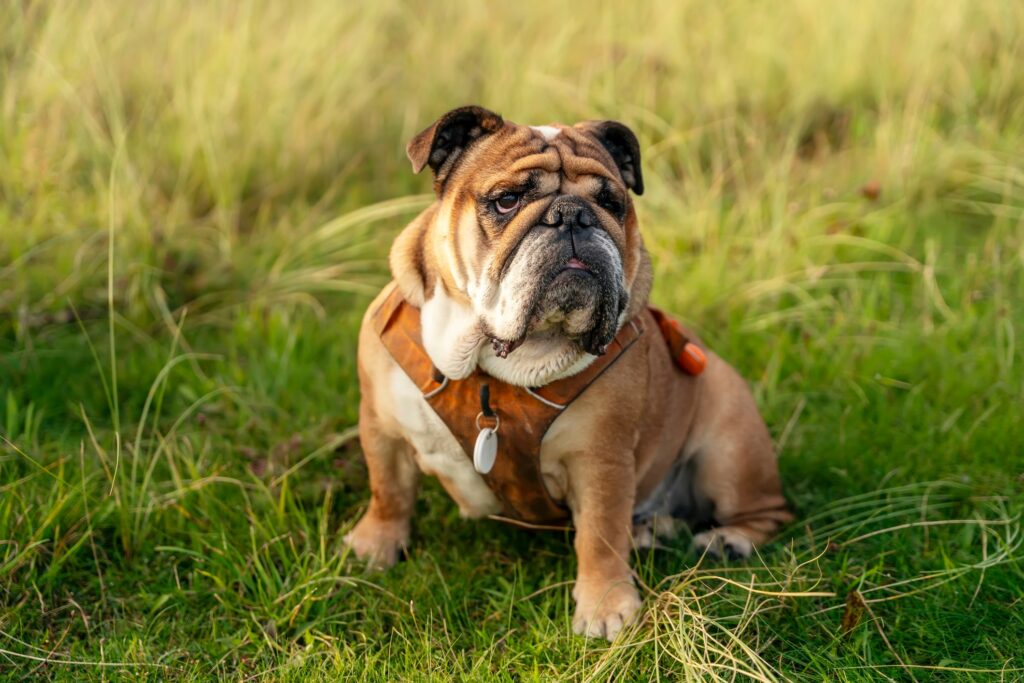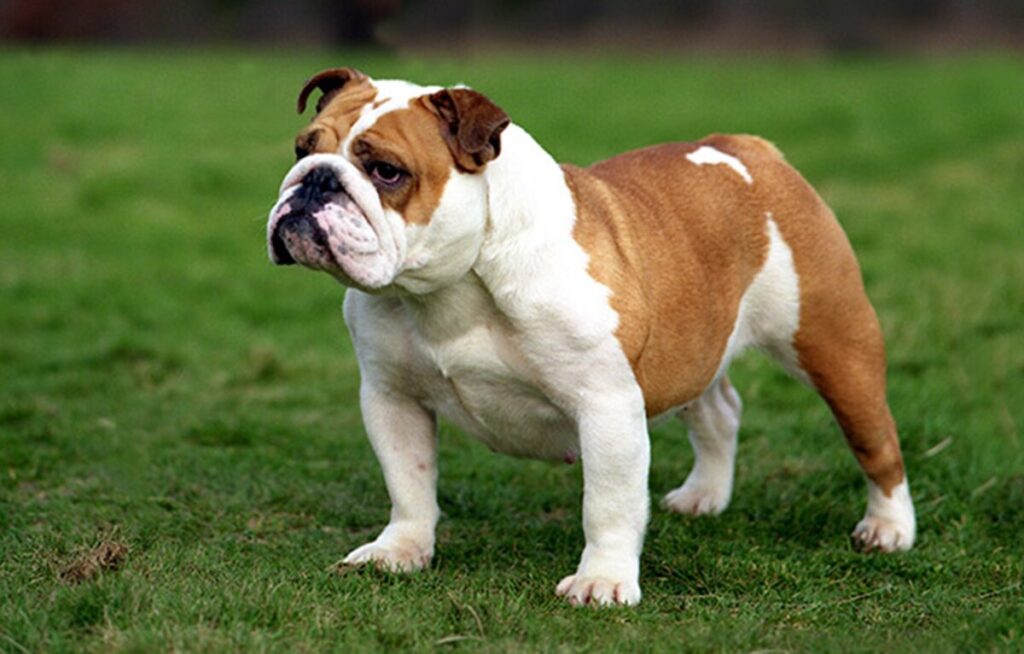English Bulldog Habitat

English Bulldog Habitat:- The English Bulldog Habitat is known for its sweet and gentle nature, making it a wonderful family pet. Known for their predictable and dependable temperament, Bulldogs typically get along well with children and are very people-oriented, actively seeking out human interaction. This breed was historically bred for bull-baiting, which has instilled a natural courage that makes them effective watchdogs. However, while Bulldogs tend to be good with family pets, they can sometimes show aggression toward unfamiliar dogs if not socialized properly.

Living with an English Bulldog
English Bulldog Habitat are well-suited to apartment living and don’t require a yard. With generally low energy and endurance, they only need moderate exercise to stay healthy. However, they thrive best in temperate climates; Bulldogs are prone to overheating due to their short snouts and tend to struggle in hot or cold weather. It’s essential to keep them in air-conditioned spaces during summer and provide warm bedding during winter. Bulldogs are often noisy breathers, known for snoring and wheezing. They also tend to drool, and though their short coats require minimal grooming, regular cleaning of their facial wrinkles is necessary to avoid skin infections.
Caring for an English Bulldog
Bringing an English Bulldog into your home requires an understanding of their unique needs. As a brachycephalic (short-nosed) breed, they can face respiratory difficulties, particularly in hot weather. On warm days, it’s crucial to provide them with plenty of water, shade, and access to air conditioning. Additionally, Bulldogs are known to snort and snore due to their flat noses, which may come as a surprise to first-time Bulldog owners.
Their wrinkly skin requires extra care, as the folds on their face can trap dirt and moisture, leading to infections. Daily wiping with a gentle, damp cloth helps keep these areas clean and prevent issues. Though Bulldogs are relatively low-maintenance in terms of grooming, their wrinkles demand consistent attention.
Diet and Feeding
Maintaining a healthy weight is essential for Bulldogs due to their short, stocky bodies. English Bulldog puppies should be fed high-quality puppy food approved by the Association of American Feed Control Officials (AAFCO). Older Bulldogs, especially those over seven years, benefit from high-quality senior dog food that is also AAFCO-approved. Specialized dog foods are available for Bulldogs, designed with unique kibble shapes that make eating easier and often contain ingredients that support gastrointestinal, joint, and skin health. Consulting a veterinarian can help ensure Bulldogs are receiving proper nutrition for their age and health needs.
Quick Facts
• Origin:England
• Size:Medium
• Breed Group:Working
• Lifespan:8–12 years
• Coat:Short, smooth, with colors including brindle, fawn, white, and red
• Temperament:Gentle, affectionate, loyal
• Exercise Needs:Moderate
• Training Needs:Easy to train, but can be stubborn
• Health Concerns:Brachycephalic airway syndrome, hip and elbow dysplasia, skin allergies

An interesting piece of Bulldog history involves Tillman, an English Bulldog who set the Guinness World Record for the fastest 100-meter skateboard run by a dog. Tillman’s skateboarding skills were showcased on the television show Greatest American Dog, and he even made a memorable appearance in the 2009 Rose Parade.
The English Bulldog is also related to the now-extinct Old English Bulldog. Modern breeders have created the Olde English Bulldogge by crossing the English Bulldog with breeds like the American Bulldog and Bullmastiff, which brings a bit of the original breed’s characteristics into the present day.
Physical Characteristics
English Bulldog Habitat are easily recognizable with their short muzzles, massive heads, and stocky, muscular bodies. Their distinct physical features include broad shoulders, sturdy legs, low-set dark eyes, and a “pushed-in” nose. Bulldogs also have large, drooping lips, undershot jaws, and rose-shaped, folded ears. Their thick necks have two loose folds of skin forming a “dewlap,” and their heads are covered in loose skin that forms heavy wrinkles, especially around the face and neck.
Personality and Behaviour
English Bulldogs are known for their calm, sweet, and loyal temperament. They tend to be gentle, dependable, and very affectionate with their families, making them excellent companions for children. Bulldogs enjoy human attention and thrive when surrounded by family members who show them love and care.
Although they may look intimidating due to their muscular build and large head, Bulldogs are generally laid-back and rarely show aggression. However, their history as bull-baiting dogs has given them an innate courage, making them reliable watchdogs. Bulldogs generally get along well with other family pets, but proper socialization from a young age can help prevent potential aggression toward unfamiliar dogs.

Lifespan
The average lifespan of an English Bulldog is relatively short, typically ranging from 8 to 12 years. Various factors, such as diet, exercise, and genetic health conditions, can impact their longevity. Bulldogs’ size and genetic predispositions often contribute to a shorter life expectancy than other breeds of similar size. Regular vet checkups, a balanced diet, and moderate exercise can help improve their quality of life and potentially extend their lifespan.
Living Needs and Temperament
Bulldogs are relaxed dogs who enjoy indoor living. They have low energy levels, making them ideal for apartment dwellers and families without large yards. Bulldogs don’t need intense exercise; short, daily walks and some playtime suffice. Their laid-back nature means they are happy lounging on the couch or cuddling up with their owners.
Despite their calm demeanor, Bulldogs can be quite stubborn. Once a Bulldog has made up its mind, persuading it to do something else can be challenging. They enjoy attention and are generally good with children who understand and respect their independent streak. However, they are also known for their determination and will protect their loved ones if necessary.
Training and Behaviour
Bulldogs are often called “couch potatoes” due to their love for lounging and sleeping. They are affectionate but require firm, consistent training. Bulldogs are known for their chewing habits, so it’s essential to provide them with plenty of chew toys and to keep valuables out of reach. Due to their flat noses, Bulldogs may struggle with physical exertion, and long walks or intense play should be avoided. A Bulldog who tires will simply stop moving, and once this happens, there’s no convincing them to keep going.
Special Care Tips
Due to their brachycephalic (flat-faced) structure, Bulldogs often wheeze, snort, and snore, which many owners find endearing. However, these same features make it difficult for them to regulate body temperature and breathe efficiently. Bulldogs should never be left unattended around water, as they are poor swimmers. In hot weather, it’s especially important to monitor them closely for signs of overheating, and always ensure they have access to a cool area where they can relax.
Also Read:-




